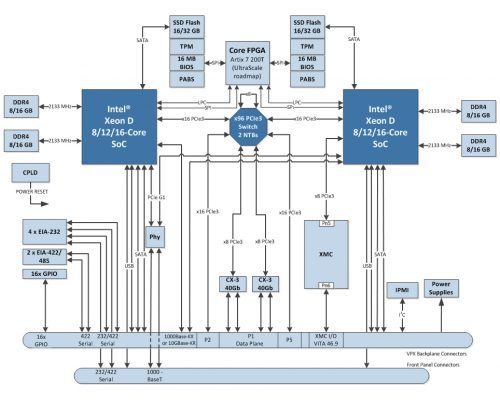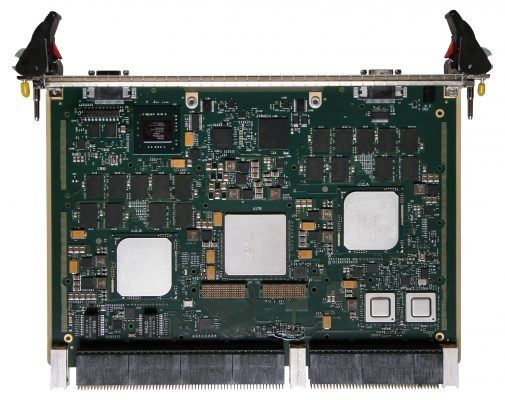Rugged Design Starts with Smart Choices
Extreme temperatures. Intense vibration. Dangerous chemicals.
These are just some of the challenges of rugged environments. To build equipment that can handle these conditions, engineers need to make the right design decisions for their components, chassis, and software. Here's how to get the job done.
Rugged Design Criteria
Rugged design means different things to different people. For logistics systems, it means coping with rumbling vehicles. For power grids, it means dealing with rough weather.
While each application is unique, the requirements typically involve temperature, shock, vibration, dust, and moisture. Key issues include:
1. Temperature
Rugged environments often involve extreme temperatures—hot, cold, or both. Thus, all the components in a rugged design must be specified to withstand the relevant temperature ranges.
Temperature is also an important consideration at the board and system level. For example, signal integrity gets tricky at the high and low ends of the thermal spectrum. As a result, rugged designs need to provide a little extra margin over the standard commercial speeds.
2. Dust and Moisture
Dust, moisture, and other environmental hazards are also commonplace. In some cases, these issues can be handled through techniques like special board coatings.
In other cases, these hazards require sealed, fanless designs. But going this route often creates secondary problems related to heat dissipation.
3. Heat Dissipation
Keeping rugged equipment cool can be a major challenge, particularly for fanless designs operating in hot environments. There are many ways to tackle the challenge—including finned enclosures where the whole chassis acts as a heat sink—but one obvious place to start is choosing lower-power components.
Quite often, the industrial variants of a processor run a bit slower, so that they don't put out as much heat. That's also true for memory. The industrial versions often run slower so they can operate reliably across a wide temperature range. But these slower parts also make it harder to meet performance goals.
4. Shock and vibration
Shock and vibration can literally rip a system apart. To avoid mechanical failure, engineers must consider everything from how components are mounted to boards to the way external I/O is connected to the chassis.
Board design is a particularly important factor. A PCB can have up to 32 layers. Specific design rules are required to ensure that high-speed signals survive and function properly on a variety of thermal ranges and vibration profiles. For example, a lot goes into the placement of the devices on the PCBs and the stack-up of the actual layers.
The challenges only increase for high-speed signaling like next-generation Ethernet and the forthcoming PCI Express Gen 4. These higher rates present even greater challenges over the temperature range and vibration profiles that industrial boards endure.
Defining Success
So what does a successful rugged design look like? Longevity is certainly important. Rugged equipment is often in service for years, sometimes even decades. “The customer needs to know how long the devices are expected to survive,” said Marc Couture, Senior Product Manager for Curtiss-Wright Defense Solutions.
Mean time between failures is also critical. “In almost every single project, we are asked about the MTBF of the product,” Couture added.
Another important consideration is that the industrial components cost more than the commercial counterparts. “The metal that we use to reinforce the industrial modules, the casings that they are in, the heat-pipes, all of these affect the cost,” Couture said.
Choosing a Rugged Board
Starting with a ruggedized board can make this all easier. A good example is the Curtiss-Wright CHAMP-XD2, a VPX module with unprecedented DSP power for rugged embedded computing environments.
The CHAMP-XD2 design starts with dual Intel® Xeon® D processors (Figure 1). Unlike typical server-class processors, which run at a thermal design power (TDP) of 50 to 120 Watts, the Xeon D processors feature a TDP rating of 19 to 65 Watts. This low power rating allows the chips to be used in fanless applications.

Figure 1. The CHAMP-XD2 board uses two extended temperature Intel® Xeon® D processors with 8 to 16 cores each. (Source: Curtiss-Wright)
In another departure from data-center norms, the Intel Xeon D processors are rated for 40° C to 85° C operating ambient conditions. Couture points out that this “allows designers to ensure that throttling will not occur even at the hottest card edges.”
The rough-and-ready design extends to the rest of the module. Everything from the memory, all the way down to diodes, connectors, ejector handles, etc. is designed to withstand harsh conditions.
Next, Curtiss-Wright employs metal frames that are consistent with the methodology of cooling required for the module. “It's a tradeoff between how much heat you want to remove versus how light you want the module to be; quite often, it's a tradeoff between copper and aluminum,” Couture said.
But sometimes it's not just about having thin stock or cold plates married to the hot components. Curtiss-Wright also uses complementary techniques such as heat-pipes to facilitate efficient heat transfer. “It's not only about how much heat you can get out, but also how fast you can remove the heat,” Couture added.
Ruggedize the Chassis
Ruggedization efforts are needed at the chassis level as much as at the card level. The best practices include metal shells that allow modules to get as much heat out as possible and survive vibration.
For hot environments, there are conduction-cooled cards, which use a heat exchanger to maximize thermal dissipation. The colder the sidewall, the easier it is to cool the processor, so that it can last longer.
It’s worth mentioning that VPX modules plug into a backplane via sturdy connectors (Figure 2). These connectors firmly seat the module and keep it married to the backplane. In some cases, isolation mechanics are used to ensure that the modules are not taking the full brunt of the vibration.

Figure 2. Rugged connectors handle excessive heat and vibration. (Source: Curtiss-Wright)
Software Matters
Couture added that software also plays a crucial role and can make things run much hotter than they need to: “With a well-architected processor and well-coded software, the Intel Xeon D may run 5 to 10 Watts lower to get the same job done.”
That's where Curtiss-Wright's OpenHPEC development tools help optimize data flow, identifying if CPU cycles are being spent needlessly. The CHAMP-XD2 rugged module is also supported by a suite of firmware, OSs, communication APIs, and signal processing libraries.
Make Tough Design Easier
Coping with the extremes of rugged environments is never easy, but making a few smart architectural decisions up front can simplify matters considerably. Choosing the right processor, the right boards, and the right chassis is a good place to start.